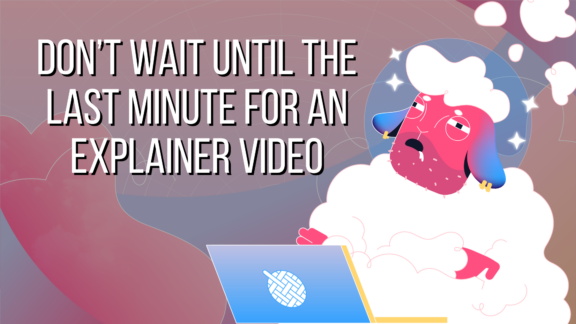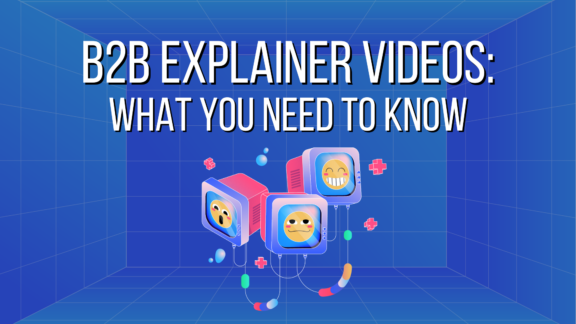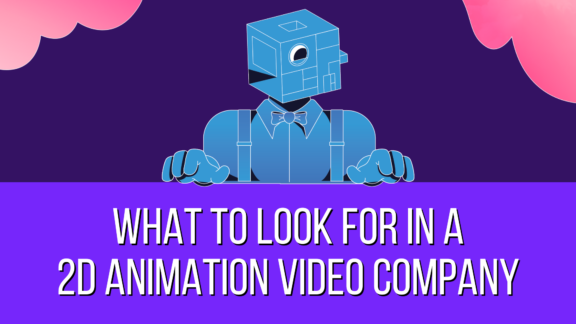- All
- 3D
- Animation
- AWS Activate
- B2B
- B2C
- Bit of Both
- Blog
- Cisco
- DB Culture
- Education
- Emmy® Award Winning
- Entertainment
- Explainer LP
- Featured
- Finance
- Fitness
- Healthcare
- HIMSS
- InBound19
- Live Action
- Live Action LP
- Manufacturing
- Marketing
- Motion Graphics LP
- Software + Tech
- The Drip
- Uncategorized
- Video Marketing
- What We Do Bit Of Both
- What We Do Live Action
The Hidden Downsides of AI-Generated Videos
August 26, 2024

Table of contents
For the last year, you’ve probably heard a ton about generative artificial intelligence. It’s become a massive buzzword for companies, sometimes to the point of it almost becoming meaningless. Everyone wants to jump on the AI bandwagon because it’s hip and trending. You’re probably also seeing it creep into, if not dominate, your conversations around marketing. “Can’t AI just make our copy/art/videos?” is something being asked in nearly every meeting. For this week’s blog, we’re going to examine AI because the truth of the matter is, it’s not the magical panacea the tech companies are trying to tell you it is.
Artificial Intelligence Isn’t New
First, let’s set the record straight about AI. While it’s become what every company wants to sell you, AI isn’t new. It’s all about analyzing data and patterns and reacting to it. Video games have already been using it. Companies like Neftlix use it when they’re advertising shows to you or customizing the thumbnails you see. It’s all just algorithms running in the background.
This traditional AI certainly doesn’t sound very flashy. But you know what does sound flashy? Being able to have a computer that makes a piece of art or a video out of nothing but a text prompt (we’ll come back to this later). What if you could ask it questions or have it write you a novel?
What Generative AI is Actually Doing
On the surface, generative AI may seem harmless. You get to open a fun program and give a few prompts and it spits out an image, a paragraph, or even a video seemingly out of nowhere. But, have you ever asked yourself how it’s able to perform such a task? Well, we’re going to tell you. The truth is that these tech giants are actually stealing content from around the web to train their machines. So when you have it generate an image, that image was actually created from stolen artwork. And as more is being learned about this practice, more lawsuits are popping up. So if you’re using generative AI for your branded content, who knows what the legal ramifications could be down the road.
This also raises a ton of questions and concerns about data privacy and security. Since these AI algorithms rely on all kinds of stolen data and information, it often includes sensitive personal information, such as images, videos, and voice recordings. The collection, storage, and use of this data pose significant privacy risks, particularly if it falls into the wrong hands. It’s already become a joke that our phones and computers are listening to everything we’re saying, but now some of that data is being entered into a AI systems that the public has access to.
Ethical Concerns and Deepfakes
The rise of AI-generated videos has also given birth to a new wave of ethical concerns, particularly with the advent of deepfake technology. Deepfakes are AI-generated videos that manipulate the likeness and voice of individuals to create convincing yet entirely fabricated content. There’s already a lawsuit from Scarlet Johansson around the use of her “voice.”
Now, you may not intend to create a deepfake video. But what happens when an AI program pulls from a video and reuses a person? The difficulty in distinguishing between real and AI-generated content also poses a significant challenge for verifying the authenticity of information, further complicating the fight against misinformation. The whole goal of marketing content, especially videos, is to build trust with your audience.
Authenticity and Creativity
Let’s put the legal and ethical problems aside now. Another one of the most significant criticisms of videos made by generative AI is the loss of authenticity and creativity. While AI can mimic human creativity to a certain extent, it lacks the genuine emotional depth and unique perspective that human creators bring to their work. Like we mentioned early, AI is all algorithms. So AI content just relies on patterns and data from existing materials, leading to derivative and formulaic outputs. AI can’t produce any truly original work.
Moreover, the emotional resonance of a video is often what connects with audiences on a deeper level. We talk all the time about how your videos should be connecting with your audience. The way you do that is by being able to relate to your audience. Creators can infuse their work with personal experiences, emotions, and cultural nuances that AI simply cannot replicate. This lack of genuine emotional connection can make AI-generated videos feel hollow and insincere, potentially alienating viewers who seek authenticity in the content they consume.
Take a look at this recent AI-generated ad from Toys-R-Us. First off, it just looks poor, like some kind of uncanny valley nightmare instead of the dream they were probably going for. But secondly, think about the message. This ad is all about toys and a child’s imagination. So instead of letting artists create and pull things from their own imagination, they told a computer to do it. It’s incredibly antithetical to the ad’s message. And based on the public’s response to the ad, they saw right through it. That’s why real authenticity is so important.
Generative AI’s Impact on Jobs and Work Life
The automation of video production through AI also raises concerns about job displacement and its economic impact. As generative AI becomes more sophisticated, it can perform tasks that were traditionally done by us humans, such as video editing, animation, and even scriptwriting. Heck, we even tested it for you in this blog last year.
Now, if you’re holding the purse strings, you’re probably thinking, “Great! That means we can get content for a lot cheaper than we were before.” I’ll pause for a second to remind you of the horrifying ad we looked at in the previous section. That’s probably not what you want your video to look like. So you’ll still have to hire a person or team to fix the video. In fact, that’s become a huge problem with generative AI overall.
It’s actually being discovered that AI is making people less productive than before. Almost 80% of workers who use generative AI in their jobs said it has added to their workload and is hampering their productivity. Mistakes or biases in the data used to train AI models can result in content that perpetuates stereotypes or misinformation. Additionally, the quality of AI-generated videos is highly dependent on the quality of the input data. Poor-quality data can lead to subpar outputs, making it challenging to produce consistently high-quality content.
It falls into some of the same things we’ve talked about before here. Like how a bad video could end up costing you more than a good video. You’re having to spend the time and resources going back to clean up whatever AI spits out. Again, it’s just running on algorithms. It’s like when you used to argue with chatbots on AIM. It doesn’t really understand what you’re asking. The human element is the key and what makes your marketing shine.
Cultural and Social Impacts
AI-generated videos also have the potential to impact culture and society in ways that are not yet fully understood. The widespread use of AI in content creation could lead to a homogenization of cultural expression, as AI models often rely on mainstream data that may not fully represent diverse perspectives. This could result in a loss of cultural diversity and the marginalization of voices that are already underrepresented in mainstream media.
Additionally, the normalization of AI-generated content could change societal attitudes toward creativity and originality. As audiences become more accustomed to consuming AI-generated videos, there may be a shift in expectations around what constitutes creative work. This could devalue the contributions of human creators and lead to a culture that prioritizes efficiency and mass production over artistic expression and individuality.
Brewing Videos With Human Hands
We’ve touched on a lot of the bad sides of AI in this blog so don’t get us wrong, there are good uses for AI in other fields. But the state of AI generated content is not in the state that some people are claiming it to be (we direct you again to the frightening ad). The loss of authenticity and creativity, ethical concerns, job displacement, and quality limitations all underscore the need for a cautious and thoughtful approach to the use of AI in video production.
And keeping video production in the hands of humans is something we pride ourselves on at Digital Brew. There’s a lot we have to offer here and while it may seem like a no brainer, something we’ll always have are real people working behind the scenes to create the best custom explainer videos for our clients. A true partner that you can always collaborate with and count on. So if you’re ready to get started on a new video, or just want to learn about our process, we’d love to hear from you. You can always reach out to us here.
Let’s Brew This!


